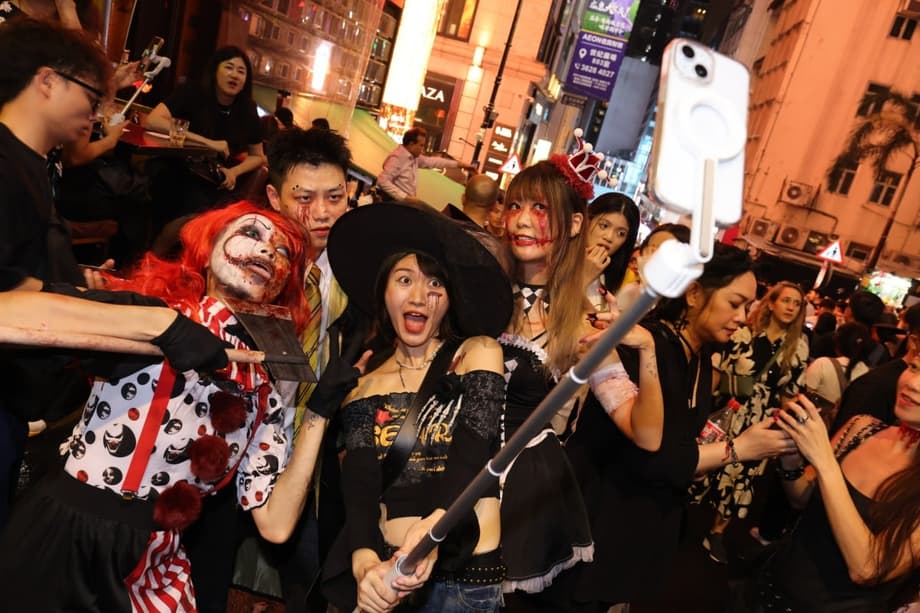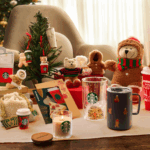Why Halloween still matters for Hong Kong
Halloween has become a reliable spark for spending across Hong Kong. The city turns the last days of October into a festival that fuels restaurants, bars, theme parks, retail, and hotels. The run into Christmas begins with costumes, street photo spots, and themed menus. Families come for kid friendly fun during the day. Nightlife crowds arrive after dark. The result is an early kick start to the most important shopping period for the city.
- Why Halloween still matters for Hong Kong
- What changed and who pulled ahead
- A citywide calendar that blends family fun and nightlife
- Crowd safety and movement plan that builds confidence
- District by district experiences beyond Central
- Theme parks as anchors and co creators
- Marketing and digital engagement
- Rules and permitting made simple
- Green Halloween with less waste
- Measuring success and staying unique
- Key Points
The tradition is not ancient. Three decades ago, entrepreneur Allan Zeman and partners seeded a small costumed gathering in Lan Kwai Fong in Central. That moment helped define an entertainment district that still draws visitors from around the world. Through the 2000s, Halloween grew across the city. Ocean Park built haunted houses. Hong Kong Disneyland added seasonal shows. Hotels and malls programmed their own events. The city became a regional magnet.
The pandemic stalled travel and large gatherings. In the same period, rival cities shaped their own Halloween signatures. Tokyo built a famous street cosplay moment in Shibuya. Seoul saw large gatherings before a deadly crowd crush forced a rethink. Shanghai leaned into cross mall displays and theme park storytelling. Hong Kong can lead again. The city still has unmatched transit, a dense and photogenic skyline, and a creative industry that understands both Cantonese culture and global trends. Seasonal programming already proves its value. Official figures from Hong Kong Disneyland show a strong rebound in local attendance after the park reopened in early 2021, with record membership among local pass holders. Seasonal events such as Halloween and Christmas remain reliable anchors for visits.
What changed and who pulled ahead
Tokyo’s approach turns a whole neighborhood into a costume runway. City authorities have had to discourage drinking and manage crowds near Shibuya Station, yet the brand of a street party survived and travelers plan visits around it. Seoul’s nightlife districts once filled with costumed revelers. After the deadly crush in Itaewon in 2022, officials rewrote safety plans and organizers shifted to structured, venue based events with clearer capacity limits. Demand for safe public celebrations did not vanish.
Shanghai doubled down on shopping driven spectacles. Theme parks, flagship stores, and malls stitch together decorations, pop up photo sets, and influencer led promotions that turn the end of October into a citywide marketing season. Singapore’s Universal Studios created a widely recognized Halloween program that pairs with hotel packages and late night hours. These are the reference points for Hong Kong’s reset.
A citywide calendar that blends family fun and nightlife
A reset needs a clear shape. The city can designate all of October as “Hong Kong Halloween Month” with a structured calendar that ladders from family activities to late night celebrations. The first two weekends focus on daytime parades in parks and promenades, neighborhood trick or treat trails led by shops, and school or community center costume workshops. The final weekend builds toward two marquee nights in Central and Tsim Sha Tsui with staged entertainment, controlled entry, and extended transit service, while family programming remains robust during the day.
Daytime family experiences
Families want easy access and safe fun. District councils can curate stroller friendly walking routes through promenades in West Kowloon and the Central harbourfront. Museums and libraries can run craft corners, storytelling hours, and costume repair tables for last minute fixes. Malls can host character meet and greets tied to local animation and film. A citywide passport program can stamp visits to different districts, with small prizes for children who complete sets.
Nightlife with controls
Evening draws will always be a crowd magnet. Bands, DJs, and street theatre can headline set stages at Lan Kwai Fong, Soho, and the waterfront. Entry needs to be managed. Free timed passes delivered by mobile app or Octopus card booking can smooth arrival waves. Clear caps per zone should be public and enforced. Alcohol service can shift to more street pop up bars that operate in designated pens with age checks and visible security. The goal is a party that feels spontaneous yet is structured under the hood.
Crowd safety and movement plan that builds confidence
Safety is the platform beneath any revival. Hong Kong has hard lessons from the Lan Kwai Fong New Year crush in 1993, which pushed the city to rethink crowd management in the district. The deadly crush in Seoul in 2022 reinforced the case for firm planning and communications during high density events. Halloween planning should start with pedestrian simulations of choke points and realistic caps for each grid of streets. One way flows during peak hours, portable barriers with quick release gates, and staff who can redirect crowds calmly will reduce risk.
A single command center should coordinate Police, Fire Services, the Transport Department, the MTR Corporation, and event producers. Real time footfall counts from cameras and mobile data can trigger color coded alerts that push to official apps and public screens. Taxi and ride hail drop off zones need to be set outside the tight cores, with clear walking routes marked and lit. Ambulance corridors must be physically protected. Wi fi networks and mobile capacity should be boosted in Central and Tsim Sha Tsui so people can load tickets and read directions. Trained volunteers, including student marshals, can help visitors navigate.
District by district experiences beyond Central
Spreading the magic across the map keeps any one area from carrying the full load. The West Kowloon Cultural District can build a waterfront parade with floats that tie into museum exhibitions and local film icons. The Tsim Sha Tsui promenade can host live projections and music with Victoria Harbour as a backdrop. On the east side of Hong Kong Island, Quarry Bay Park and the Kai Tak waterfront can run afternoon family picnics with costumes and pet friendly zones.
Mong Kok and Sham Shui Po already draw crafters and gadget hunters. A Halloween makers market there would give local designers space to sell masks, props, accessories, and makeup sessions. Seasonal merchandise thrives on global platforms, from posters to phone cases, and a curated market would localize that energy for small businesses. A guest costume repair desk, a makeup corner, and a photo wall can give shoppers a reason to linger.
Heritage venues such as Tai Kwun and PMQ can host immersive theatre, Cantonese opera with ghost story themes, and behind the scenes tours that connect the city’s layered past to playful storytelling. Neighborhood restaurants can band together to run tasting trails where guests who collect stamps from three venues unlock a dessert or late night coffee. The aim is to spread footfall, fuel smaller businesses, and make the whole month feel connected.
Theme parks as anchors and co creators
Theme parks are the engines that power seasonal attendance. Hong Kong Disneyland’s Halloween offerings have long drawn families and young adults, then rolled into Christmas programs that carry momentum into December. Official figures from the park show that after reopening in early 2021, local attendance rebounded and pass holder membership hit a record. That proves seasonal content can rally residents to visit again and again, even before full tourism recovery.
Ocean Park’s haunted attractions are a staple for many in the city. The park can co create a signature haunted house each year with a local film director or game studio, then extend the story into Central with a small satellite experience. A joint ticket that bundles one day at a theme park with reserved entry to a city zone in the evening would make it easier for visitors to plan a full day. MTR and ferry schedules can be aligned to match late night closings at both parks.
Beyond parks, the city can invite independent producers to build boutique scare experiences in heritage buildings, hotels, and open spaces, with safety reviews and accessibility checks baked into approvals. That grows the ecosystem and keeps content fresh each October.
Marketing and digital engagement
A revival is also a retail story. Restaurants, bars, cafes, and shops can run seasonal menus and bundles that reward costume wearers, late night diners, and families out in the day. Malls can stage citywide Halloween weekend sales with extended hours, live makeup tutorials, and costume runway moments. Global brands time Halloween deals, from apparel to phone accessories, because customers expect them. Hong Kong retailers can ride the same rhythm with local flavor and bilingual creative.
Digital elements can add scale without adding crowding. An augmented reality ghost trail across districts lets residents collect virtual items that convert into small discounts from neighborhood shops. A digital stamp book inside an official app can guide people to lesser known streets. Partnerships with creators can spotlight safe makeup tips, transport plans, and district highlights in short form video. The city should publish clear content about safety rules and respectful behavior, then invite creators to echo it.
Rules and permitting made simple
Event success depends on fast, clear paperwork. A one stop Halloween desk inside government can publish templates for temporary food permits, public entertainment licenses, noise controls, and road closures. Organizers could apply through a single portal, complete a safety checklist, and receive feedback within set timelines. A small grant program for micro events would bring more neighborhoods into the plan while raising standards.
Clear public rules will also help. Costumes that include realistic weapons create confusion and may violate Hong Kong’s Firearms and Ammunition Ordinance. Guidelines should ask guests to avoid such props on public streets. If a venue chooses to allow toy props, they should be bright colored and peace bonded on site. Age checks for alcohol, bag checks at entry to crowded zones, and simple signage in Chinese and English will keep events welcoming.
Green Halloween with less waste
Seasonal fun does not have to produce heavy waste. Hong Kong now restricts disposable plastic tableware in many food settings, so outdoor bars and stalls should deploy reusable cups with a return deposit. Water refill stations lower the need for bottled drinks. Decor can favor fabric, projection, and reusable lighting. City venues can host workshops that help guests repair and remake costumes instead of buying new ones.
Costume rental networks and swap events at schools and community centers can lower costs for families and reduce waste. A city donation drive after October can collect decorations and costumes for art groups and charities. Measuring diversion rates and publishing them after the season would show that a larger Halloween can also be a cleaner one.
Measuring success and staying unique
Public sector and industry should agree on shared goals. That includes visitor nights in hotels during Halloween week, average spend per visitor, footfall by district, a count of small businesses that joined, and an incident free record across headline nights. An independent review group can meet each November to test what worked and what needs to change for the next year.
The special sauce is culture. Hong Kong can lean into stories that are unique to the city, from Cantonese opera ghosts to classic cinema and comic book characters. The Hungry Ghost Festival offers folklore that can be referenced with care, balanced with the playful tone of Halloween. A Greater Bay pass could invite residents of nearby cities to visit for a weekend that includes a theme park day, a neighborhood parade, and a waterfront concert. A Halloween revival built on safety, culture, and business collaboration would be a strong signal that Hong Kong is ready to host the region again.
Key Points
- Hong Kong’s Halloween once led Asia, with Lan Kwai Fong and theme parks as anchors
- Rivals like Tokyo, Seoul, Shanghai, and Singapore built distinct Halloween identities
- Designating October as Hong Kong Halloween Month can balance family fun and nightlife
- Timed entry, one way flows, and a multi agency command center are core safety tools
- Experiences should expand beyond Central into West Kowloon, Tsim Sha Tsui, and other districts
- Theme parks can drive attendance, with joint tickets and new content each year
- Retail and digital layers, including AR trails and citywide sales, convert buzz into spending
- A one stop permit desk and micro grants can help small organizers join the program
- Green practices, including reusable cups and costume swaps, cut waste
- Agreed metrics and a yearly review will keep the program safe, creative, and effective




